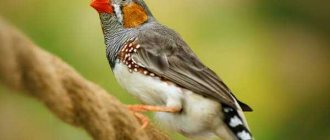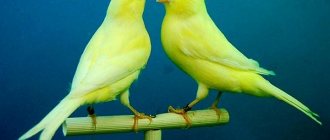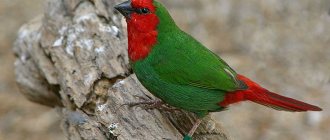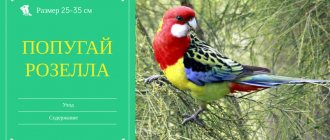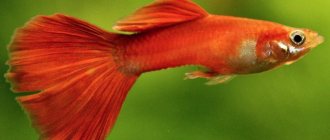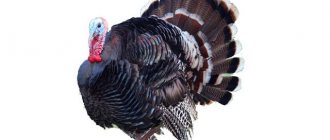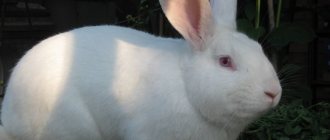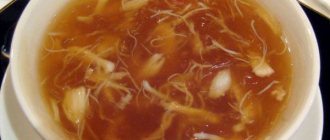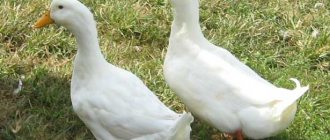Poultry farming » Guinea fowl
0
1768
Article rating
Kira Stoletova
Guinea fowl are domestic birds native to Africa. The name translates as “royal bird”. The history of domestication of this species is very long. They first began to breed it in Europe back in ancient times. Then the domestic stock almost disappeared, breeding resumed only in the 15th century. Until now, the guinea fowl is a rather exotic bird in homesteads, despite the high value of meat and eggs. The main country of breeding is France, they are popular in Germany, Spain and some other European countries.
Guinea fowl
Common guinea fowl: breeding and keeping at home
In free-range conditions, guinea fowl reproduce well.
They are easy to breed in home gardens. When forming a herd, about 6 females are provided for one male. Taking into account the physiological characteristics of the bird, the guinea fowl should be 2-3 months older than the guinea fowl. Laying begins in February, but males begin mating only in March. Peak activity occurs at an air temperature of 17-20 C and a duration of natural light of 14 hours. Mating occurs only during walking. An inseminated female carries fertilized eggs for 20 days. After oviposition, fertilized eggs are collected in the morning. Storing eggs with the blunt end facing up extends the shelf life by up to 2 weeks. If there is a hen among the guinea fowl, then this is very good. It is better to immediately purchase an incubator in advance. The eggs are placed in an incubator for 29 days with revolutions according to technology. To hatch guinea fowl chicks, the incubator is kept at a higher humidity level than for hatching chicken offspring. Day-old chicks have their wings clipped.
For guinea fowl to fertilize, the constant presence of a male in the herd is not necessary. If the Caesar is aggressive or has a weak immune system, he is removed from the herd. In this case, the females will carry fertilized eggs for about 3 more weeks.
The period of productive use of guinea fowl for obtaining eggs is 2 seasons. In the third year, egg production sharply decreases and production becomes unprofitable.
Breeding guinea fowl in the country is a profitable business
Starting to breed guinea fowl at your dacha is the right decision in the modern economy. The minimum number of competitors in this sector and the high quality of products guarantee stable profits with low productivity compared to other poultry. The egg production rate of guinea fowl is lower than that of laying hens (150 versus 300 pieces), and in terms of meat productivity they are inferior to turkeys.
Products from guinea fowl breeding:
- meat;
- eggs;
- young animals;
- feathers;
- litter.
The low live weight of guinea fowl (females up to 2.5 kg, males up to 1.5 kg) is compensated by the high quality of meat. Considered dietary, it has high taste. At 3 months, the young animals already gain 1.3 kg of weight. Adults gain up to 2 kg of weight, with the female being heavier than the male. At 7-8 months after the fattening period, the birds are sent to slaughter. During this period, it reaches its maximum size and then keeping meat guinea fowl becomes unprofitable. Their juicy and tender meat is prized in elite catering establishments. The average cost of guinea fowl meat is about 400 rubles per kilogram.
An additional or main source of income when breeding guinea fowl at home is profit from the sale of eggs. They are characterized by a high content of vitamins and microelements, and are especially useful for children. The market value of 10 guinea fowl eggs reaches 250 rubles.
Selection of the herd and the correct selection of individuals for mating allows us to obtain highly productive offspring of guinea fowl. Young animals from trusted poultry breeders are valued and in demand. The average cost of daily guinea fowl is about 100-130 rubles each. Month-old young animals are sold for 500 rubles.
The benefits of keeping guinea fowl in the country are also evident in the fight against crop pests, and the area where guinea fowl live does not require a dog. They make so much noise when strangers appear that no thieves will enter these areas. And guinea fowl are very beautiful, you can keep them in your home, admire these birds and eat healthy eggs for breakfast.
Reproduction and lifespan
In nature, the breeding season coincides with dry times. Perhaps this is why dampness is so contraindicated for young animals. Only adult individuals become stronger and not sensitive to changes in humidity. Birds find a laying area in dense thickets, away from prying eyes. This is a small depression in the ground that the guinea fowl completely covers with its lush body.
One clutch contains up to ten eggs. The shell can be gray, blue, brown, even red depending on the breed. Hatching lasts an average of 25 days. The male guinea fowl shows his attention to the female in every possible way and protects her. When danger arises, the parent pair distracts the predator in every possible way, leading them away from the laying site. Sometimes trying to protect a nest costs a guinea fowl its life.
Hatched chicks are very active. By two months they weigh 800 g. The survival rate of guinea fowl reaches 100%. Until the age of one year, they inseparably follow their mother until she teaches the offspring the skills of independent living. Thanks to their adaptive capabilities, the life expectancy of guinea fowl is more than 10 years.
Peculiarities of breeding guinea fowl in the country and in the homestead
Many farmers are frightened by the fact that this is a tropical bird and their homeland is savannas and subtropics with large forests and dense vegetation. Incredibly, they easily tolerate not only increased moisture and heat, but also cold on the same level as ordinary broilers or geese. They can easily stay without an insulated room at an air temperature of -30 degrees and also feel confident in a temperate climate zone.
On the territory of the Russian Federation there are 27 species of royal birds, which have different weights, egg production, appearance and other features. Their plumage can range from black to bright yellow. They love freedom very much and move around a lot, so it is necessary to make a large enclosure for them. They can also live in close quarters with a stocking density of up to 4 individuals per 1 square meter, but in this case they may get sick more often and have weak immunity.
Some farmers make conditions as similar as possible to wild nature for them: installing tree trunks in the aviary, as well as labyrinths in which the bird can hide. It is believed that such an atmosphere will calm them down and the body will not experience stress. At night, the birds do not need to be driven into the chicken coop; they will normally spend the night on a tree or artificial perches.
As for the roof in the poultry house, it is advisable to do it, since these galliformes fly very well and theoretically can escape. Although many years of rearing experience show that individuals never run away and constantly return to the place where they spend the night and where they are fed. Even if they fly over the enclosure, they do so solely out of curiosity, and almost always remain under its wall, trying to fly back. They don't follow a routine very well, so you need to feed them exactly at the same time every day so that they get used to it. In the morning, it is best to have a meal at 9-10 am and never let them out of the house before. This is done so that they rush early in the morning and do not rush to have lunch.
The poultry house itself needs to be equipped taking into account the fact that freedom-loving representatives live here. That is, make it spacious. The ideal option is 2 heads per 1 square meter. After the onset of warm weather, it is necessary to take all individuals out into the yard for walking as quickly as possible; here, calculate the free space at a rate of at least 25 square meters per head. Only in this case can we talk about proper cultivation. It is advisable to have a few bushes or dense trees in the area so that your exotic chickens feel like they are in the tropics.
Their way of life is of a group nature. The entire herd is divided into several groups. As a rule, each group includes no more than 15 individuals. They are kept together, get used to each other, much like pheasants, move only together and constantly stay in a heap. This helps to prevent single birds from escaping from the enclosure, as well as to restore order in the poultry house and eliminate all kinds of conflicts. As a rule, only a few months are enough to form a group; the best time for this is winter. Then the stocking density is very high and the birds are forced to “make friends”.
Breed selection
At the present stage of selection, there are more than 20 breeds of guinea fowl with photos and descriptions, differing in color, size and productivity.
The most popular ones should be highlighted:
- Gray-mottled (silver-gray). The bird's feathers are gray with a blue tint and round white spots, the neck is gray-violet, the beak and paws are gray. The body weight of an adult female is 1800 grams, a male is 1600 grams. This breed is especially attractive due to its tender meat with good taste characteristics. Productivity is up to 90 eggs per year, weighing about 45 grams each.
- Siberian whites. The color palette is matte cream with round white spots, the neck is white and blue, the beak is dark gray, the paws are light pink. The earrings of females are light red, while those of males are red and blue. The horny comb is light brown in color. The undoubted advantage of this breed is its resistance to low temperatures. The weight of a male reaches 1800 grams, a female – 2000 grams. Productivity is about 100 eggs per year weighing about 48 grams.
- Zagorsk White-breasted. This breed owes its existence to Russian breeders. The plumage on the back is gray speckled, the belly and chest are light. The earrings are small and fleshy, the comb is brown. The maximum weight of a female is 2500 grams, a male is 2200 grams. Productivity - about 115 eggs, 48 grams each.
- Cream (suede). The plumage is light with white spots. The birds are more compact in size, males weigh 1600 grams, and females weigh 1700 grams. The special attractiveness of this breed is its rapid acclimatization in different latitudes. Productivity is low and amounts to 80 eggs per year, each weighing 45 grams.
- Blue. The plumage has a gray-blue color with round spots of white, the chest has a purple tint, and the neck is purple. Males gain weight up to 2000 grams, females - up to 2500 grams. Productivity is very high among other breeds and reaches 150 eggs per year.
- Volga white. This breed is also Russian and popular in the Volga region. The plumage palette is white. The weight of a male is 1600 grams, a female is 1700 grams. Egg productivity ranges from 90 eggs per year, eggs weigh 44 grams.
In general, the breeds of domestic guinea fowl are quite similar and do not have large external differences, since they all descend from a common ancestor - the common guinea fowl.
Conditions for poultry
Only compliance with certain requirements for keeping poultry will allow you to get healthy guinea fowls that will delight you with good productivity indicators. Birds need to be equipped with a roosting house and a walking area.
Arrangement of poultry house and walking yard
Breeding guinea fowl begins with arranging the room where they will be located. To do this, use an outbuilding or build a building, making sure to insulate it and protect it from drafts. Everything in the room should be conveniently arranged so that the birds can lay eggs.
To increase egg laying, bedding is provided indoors - it should not only absorb moisture well, but also provide warmth. It is advisable to treat the floor with slaked lime. To do this, use a kilogram of product per 1 square meter. Only after this is it permissible to lay dry bedding on the floor using sawdust, dried grass or straw.
Guinea fowl are birds that prefer free space and a lot of space for walking, which is why you will need to equip a large aviary
It is especially important that birds have access to a free range during the mating season, as cramped space will cause them to refuse to mate. The aviary in which the birds will roam is covered with a mesh up to two meters high - this is necessary so that the birds do not fly over it
Experienced farmers recommend making a canopy - it will protect the birds from the scorching sun and protect them from rain.
Living conditions
Feeders and drinking bowls must be installed in each enclosure or cage. Birds should always have access to clean, fresh water. In summer, it protects birds from overheating.
It is very important to follow the sanitation and hygiene procedures required for raising guinea fowl. To do this, once a month you should disinfect the poultry house, regularly wash feeders and drinking bowls, places where birds live
Some varieties of guinea fowl need to be separated when breeding and raising, because they are prone to competition and fights. They must be provided with space, otherwise it threatens to reduce egg production. When growing, it is advisable for the farmer to observe the behavior of his charges in order to take appropriate measures in time.
Difficulties
Among the main problems of home breeding of guinea fowl are:
- demanding conditions of detention during the mating season;
- mandatory incubation hatching;
- a large percentage of rejected eggs during the incubation process;
- raising chicks in a brooder;
- difficult procedure for clipping wings;
- high activity and naughty nature of the chicks.
Feeding guinea fowl
Guinea fowl are unpretentious to food. They eat little; up to 160 grams of mixed feed with the addition of greens and vitamins is enough for them per day. Guinea fowl actively eat pests from garden plants, and are especially fond of Colorado potato beetles. Here is a list of foods that are fed to birds:
- boiled vegetables (carrots and potatoes);
- meat waste;
- feed or grain (corn, barley, oats);
- green food (plants);
- hay and pine needles (during the cold period);
- mineral and vitamin supplements.
Guinea fowl are fed three times a day. Over the course of a year, one individual eats up to 35 kg of grain or combined feed, about 15 kg of grass, 5 kg of vegetables and up to 2 kg of fertilizing. When free-ranging, the need for additional feed is reduced by a third due to the bird eating various insects and plants.
Table 1. which shows the approximate daily diet of guinea fowl:
| Stern | During the rest period | When laying eggs |
| Grain mixture (waste) | 108 | 120 |
| Coarse grain mixture | 30 | 30 |
| Alfalfa (nettles) | 4 | 16 |
| Boiled potatoes | 30 | 50 |
| Fresh herbs | — | — |
| Bone flour | 150 | 120 |
| Gravel | 50 | 60 |
Conditions for keeping chicks
Chicks must be kept at home and on farms at 33–35°, especially in the first week of life. Next, you can lower the temperature slightly, to 29–30°, and by the month gradually bring it to 17–18°
Always pay attention to the behavior of the chicks, their appearance; when the guinea fowl are huddled together, you need to immediately increase the temperature in the room, they are cold. But if, on the contrary, they are inactive, breathe frequently, their beak is open, they are too stuffy.
The guinea fowl is light-loving, so for the first half a month it is necessary to increase the daylight hours to 19–20 hours a day, then 17–18 hours will be enough, and by 2–3 months it should be reduced to 7–8 hours. The main thing is that the lighting is not bright, 8–10 sq.
m. you will need 2 lamps of 20–30 W each.
For fattening guinea fowl, it is more advisable to use factory-made combined feed, especially on farms, because it contains all the nutrients they need, microelements, vitamins, etc.
But, if you grow it at home, for your own needs, and in small batches, you initially need to feed it: hard-boiled eggs, cottage cheese, millet, steamed wheat and corn porridge, mixing with dry milk.
What to feed the birds
Guinea fowl are very specific birds because they can take care of their own food. They graze well, collect all kinds of insects, and also hunt small reptiles and rodents. But you shouldn’t rely on the wild instincts of self-preservation of your charges. From the first days they need to be accustomed to organizing feeding at the same time.
And taking into account the main goal of breeding broiler breeds, which is intensive meat growth, the nutritious diet of birds should consist of a variety of components rich in minerals and vitamins. Let's figure out what can and cannot be given to adults and young animals. Guinea fowl can take care of their own food
Adult guinea fowl
These exotic birds eat absolutely everything. But for their successful breeding, the diet must be balanced. Ideally, it consists of the following products:
- oats - 20 g;
- barley - 20 g;
- corn - 21 g (the grain component can be replaced with food waste in the form of boiled potatoes, porridge, cottage cheese);
- wheat bran - 20 g;
- fish meal - 5 g;
- raw carrots - 20 g (the component is very important because it is the main source of retinol and keratin, although it is eaten reluctantly);
- clover, alfalfa, meadow grass mixture, cabbage leaves, quinoa, nettle, young birch leaves, dandelions, burdock tops - 25 g;
- chopped spruce needles - 15 g;
- yeast - 6 g (significantly increases egg laying rates);
- fish oil, waste or boiled minced meat - 3 g (administered only in cases where pets are deprived of the opportunity to forage in the garden or meadow, where you can catch plenty of worms, mice, slugs and frogs);
- table salt - 0.3 g;
- fresh greens - 50 g (with free range, the animals fully satisfy their needs for this ingredient; it is undesirable to give limp or hardened grass);
- mineral feed (fine gravel fractions, crushed chalk, crushed shells of marine or freshwater origin, wood ash, coarse river sand);
- compound feed - 50 g (it is advisable to feed dry);
- meal - 10 g (the supplement is relevant for protein deficiency).
It is recommended to feed mature birds at 7, 12 and 18 hours
In addition, it is important to promptly change the water in drinking bowls.
The diet of guinea fowl is in many ways similar to the diet of chickens. The only difference is in the recommended daily protein intake, which should be 24% of the total feed. As the chicks grow older, this figure is reduced to 17%. For the full development of young animals, the following is introduced into their diet:
- wheat bran (given from the first day of life, starting from 1 g, gradually increasing the portion to 10 g by 90 days of age);
- hard-boiled chicken egg (recommended in the first week of life);
- bread crumbs soaked in milk;
- ground corn kernels (can be given to newborns, starting from 1.8 g and increasing the portion by the 50th day of life to a maximum of 4.6 g);
- oat flour (from a gram portion by the 120th day of life the portion grows to 13.5 g);
- wheat flour (veterinarians advise adding 3 g of this component every 2.5 months);
- millet (5.7 g is given only from the 59th day of life, gradually increasing the daily norm to 20.7 g);
- ground barley grains (introduced into the diet at three months of age with a daily portion of 4.2 g);
- fish meal (give 1–3 g from the first day);
- yogurt (useful as a first complementary food in a dosage of 3 g, gradually the daily dose is increased to 14 g);
- fresh greens (dandelions and alfalfa are finely chopped for newly hatched chicks);
- clover hay (recommended 13.3 g from 3 months of age);
- baker's yeast (you can give 1-2 g from 40 days of life).
Chicks, just like adult guinea fowl, should eat 3 times a day. Intensive fattening should begin from the age of three months.
Chemical composition
Nutritional value (per 100 grams of raw meat)
| Calorie content | 110 kcal |
| Squirrels | 20.64 g |
| Fats | 2.74 g |
| Carbohydrates | 0 g |
| Alimentary fiber | 0 g |
| Water | 74.44 g |
Vitamin composition (in milligrams per 100 grams of raw meat)
| Retinol (A) | 0,012 |
| Thiamine (B1) | 0,067 |
| Riboflavin (B2) | 0,112 |
| Pantothenic acid (B5) | 0,936 |
| Pyridoxine (B6) | 0,47 |
| Folic acid (B9) | 0,006 |
| Cobalamin (B12) | 0,00037 |
| Ascorbic acid (C) | 1,7 |
| Nicotinic acid (PP) | 8,782 |
Nutrient balance (in milligrams per 100 grams of raw meat)
| Macronutrients | |
| Potassium (K) | 220 |
| Calcium (Ca) | 11 |
| Magnesium (Mg) | 24 |
| Sodium (Na) | 69 |
| Phosphorus (P) | 169 |
| Microelements | |
| Iron (Fe) | 0,77 |
| Manganese (Mn) | 0,018 |
| Copper (Cu) | 0,044 |
| Selenium (Se) | 0,0175 |
| Zinc (Zn) | 1,2 |
Guinea fowl breeding technology
It is better to start breeding in the spring. From April, eggs are laid in incubators. When the chicks hatch and grow up, they are selected for meat and for sale separately. At the end of summer, laying hens are separated, which will provide next year's offspring. The rest are fattened for meat. The bird grows for no more than 8 months before slaughter.
Guinea fowl are kept in chicken coops. To keep 30 birds, you will need a room of 8x4 m. An enclosure for walking needs to be built with dimensions of 15x10 m. Guinea fowl are capable of flying, so a fence of at least 2.5 m in height needs to be built for them. Perches are made at a height of at least 1 m. They are usually located along the length of the room. Nests are built on perches. You can use old furniture boxes as them. Sometimes birds begin to lay eggs right on the floor. You can also build nests in this place. Eggs from them, however, are not suitable for further incubation, as they cool quickly. And the nest itself will quickly become clogged. There must be a bedding of sawdust on the floor. It absorbs moisture and makes cleaning the chicken coop easier.
As the weather gets warmer, birds spend more time outside. A house is often set up for them in their walking area, and they spend the night there. Ash or sand is scattered on the site. It is noteworthy that even if one of the birds flew away, it will certainly try to return to the pen. Guinea fowl quickly get used to people. They can recognize their own and strangers. If a stranger enters the pen, they are capable of screaming.
Guinea fowl are fed in the same way as other pets. Below are the basic rules of their diet:
| 1 | Green grass, clover, chopped pine needles, carrots are the main sources of vitamins and carotene for birds. In the wild, chicks consume a lot of greens, so in captivity they need to be provided with this. |
| 2 | In order for females to lay healthy eggs, fishmeal and grains are added to their diet. Each individual should eat at least 100 grams of finely chopped nettle or lettuce. |
| 3 | Food is given to the herd at the same time. |
| 4 | The chicks are fed succulent food with yeast. Be sure to include oats and barley in the diet. |
| 5 | During its entire life, an individual eats about 35 kg of grain. |
| 6 | Green grass is replaced with root crops and hay in winter. |
It is important to ensure that the birds do not become fat, otherwise breeding will be pointless. To do this, they are weighed every 30 days.
This is especially important during the period of decreased egg production - from the beginning of autumn. Additionally, vitamins B12 and A are added to the feed.
Breeding rules for guinea fowl also exist. In order not to spoil the tribe, you need to select the strongest and healthiest individuals. Such birds are kept at the rate of five per 1 sq.m. One male is capable of fertilizing up to 5 females. It must be older than 2 years, but females of this age lay eggs worse, so younger individuals are selected. Birds are periodically purchased from other nurseries.
How much money do you need to start a business?
The guinea fowl breeding business can be considered a home business. You need little for this: a plot of land, the possibility of building a chicken coop and connecting communications to it. To purchase young animals you will need about 7 thousand rubles. The first income can be received in 8 months, when the first poultry meat is sold. Even if you don’t make big profits the first time, the family will be provided with delicious eggs and meat. The larger the flock, the more successful breeding of guinea fowl is. To achieve a serious result you need to work hard for several years.
Guinea fowl breeding
Breeding guinea fowl
To successfully breed guinea fowl, you need to follow certain rules:
- For crossing, birds of the same color must be selected;
- guinea fowls easily interbreed with chickens, but produce sterile hybrids, so guinea fowls and chickens must be kept separately;
- young guinea fowl lay eggs better, but it is much more difficult for a male to fertilize them, and their eggs are smaller than those of their older relatives;
- if the male is very productive, he is left for the second season;
- Crossing of two birds of different sexes from the same mother should not be allowed - this leads to the appearance of weak and unproductive offspring;
- Guinea fowl eggs that are planned to be kept in an incubator must be collected in the morning.
Guinea fowl breeding
When the mating season begins for guinea fowl, they require quite a lot of space, since cramped conditions create obstacles for the birds to mate. It is best to provide the birds with free range during this period. The quality of the eggs depends on the fertility of the breeding male. One male is usually enough for five females.
Description of the species
Where does the free guinea fowl live and what kind of bird is it? Guinea fowl are found in the dry highlands of Africa. They inhabit low forests, savannas and steppes covered with bushes, trying to nest in secluded places and dense thickets. The basis of bird nutrition is seeds and plant stems, midges, beetles, worms, small reptiles and rodents.
African wild birds have 23 species, the most famous are the vulture guinea fowl and the grey-speckled guinea fowl, the woodland and crested birds are also known. The second was domesticated, about 20 breeds were bred from it. In some regions, wild guinea fowl are hunted. After all, you can catch a bird with your own hands; in many countries entire populations have been destroyed this way.
In appearance, the bird looks a little like a chicken, a little like a turkey. You can better see what a guinea fowl looks like in the photo. Here is a general characteristic and description of domestic and wild birds of this species:
- The head and neck are completely naked
- There is a horny growth on the back of the head
- The beak is crocheted, medium
- Under the beak two fleshy processes are visible, the so-called “beard” or “earrings”
- Large body
- The back is well rounded
- The tail is lowered down, smoothly connecting to the back
- Wings shortened, with rounded tips
- The color depends on the breed, most often gray-mottled
Many people ask how guinea fowl scream. These birds are quite noisy, their voice is sharp, somewhat reminiscent of creaking or crackling. Not everyone likes the cry of domestic guinea fowl. Therefore, farmers prefer to keep them away from their own homes. For some people, the sound is so disturbing that they even dream about it. The dream book says that listening to the voice of a guinea fowl in a dream portends a divorce, but astrologers can’t come up with anything.
Guinea fowl are semi-wild birds, therefore they require a large space for walking. Males are not aggressive, but when kept with hens they can get into fights with roosters. The roosters usually win the fights, but after a few days the fights happen again. They say that crossing chickens and guinea fowl produces a hybrid, but no one has seen it. Guinea fowl fly well, so the pens for them are built high. You can simply clip the wings.
Breeding
Guinea fowl are very profitable to raise in the home. Among the advantages of royal birds are the following:
- good egg production;
- healthy dietary meat, rich in iron, vitamins, amino acids;
- high survival rate of young animals - up to 95%;
- free range, which brings benefits: destruction of various insects that harm plantings;
- resistance to various diseases, good immunity;
- the possibility of sharing with other farm birds;
- ability to tolerate different climatic conditions.
To breed guinea fowl at home, you need to buy several birds. In this case, the following conditions must be observed:
- for one male there must be at least five females 2 months younger than him;
- provide long-term walking in the wild;
- if males behave aggressively, they can be separated after a single mating, since the female carries fertilized eggs for 20 days;
- eggs should be collected in the morning, laid out with the pointed end down - this will keep the embryos active for about 14 days.
Another common method of breeding offspring is the purchase of ready-made young animals.
It is important to pay attention to the following factors:
- The chicks must be healthy, without wounds, covered with even soft fluff, have clean bottoms, and wings tightly pressed to the body. Healthy chicks are active, respond well to sounds, just lightly knock on the box and the guinea fowl will make a noise;
- You should buy about 20 day old chicks;
- Chicks 2-3 weeks old can be released to walk on their own, this way they will learn to get food.
If the offspring are bred by a female hen/turkey, there will be fewer problems with the chicks. The period from April to July is the optimal time. If this is not possible, then young animals can be produced in an incubator.
The prepared eggs are laid according to the instructions and waited for 27 days, during which the air humidity in the room is monitored.
Productive characteristics
The weight of males varies from 1.5 to 1.6 kg, in females from 1.6 to 1.7 kg. Puberty occurs by the eighth month. Oviposition occurs seasonally and lasts just over six months. One guinea fowl can produce about 120 eggs, the average weight of one is 46 grams, the shell is light with specks, very durable.
The incubation period lasts 28 days, hatchability rate is 90, chick survival rate is up to 99%.
Interesting fact. Thanks to the dense shell, egg products can maintain their quality for 6 months at temperatures up to +10 degrees.
Slaughter yield up to 85%.
Caesars
Walking guinea fowl in the country
With the onset of warm weather, guinea fowl can be transferred to paddocks (at the rate of 30 m2 per head). Walking areas should be fenced with wire mesh 2 meters high so that guinea fowl cannot fly over it. The walking area is selected with natural bushes to create the proper conditions for this type of bird.
A standard mobile house is placed in the middle of the paddock. With the onset of darkness, guinea fowls enter (or are driven) into the house and sit on perches, and at 6 o’clock in the morning, before morning feeding, they are released to walk for the whole day.
Massive cases of guinea fowl flying over the fence and going into the forest have not been observed. Sometimes one or two guinea fowl can fly over the fence, but they do not go further than 5-10 m and strive to get back into the fenced paddock.
Guinea fowl that have overwintered in the same room get used to each other and stick to one group when walking. They quickly get used to the service personnel and willingly listen to them. However, as soon as a stranger appears on the farm, the guinea fowl immediately raise a cry and calm down only when he leaves.
Sawdust serves as bedding for guinea fowl during the winter period. In the summer, for the convenience of cleaning up litter, you can also sprinkle sawdust on the floor of the house. All necessary equipment - feeders, drinkers, buckets, etc. are used the same as for chickens.
Guinea fowl, like chickens, love to rummage (bathe) in the ground, for which purpose it is necessary to have sand or install ash baths on the paddocks. I advise placing ash baths in the poultry house, since guinea fowls readily use them.
